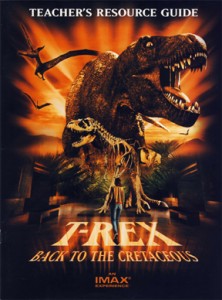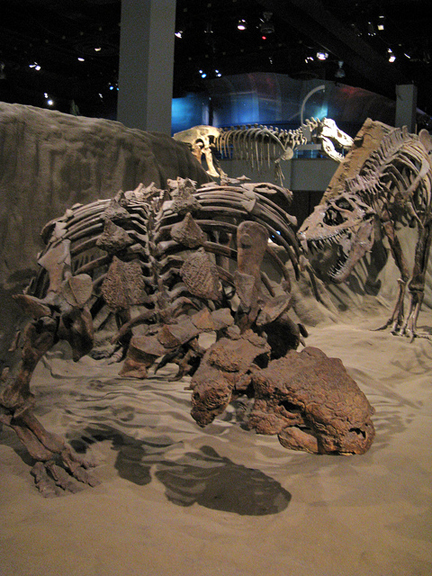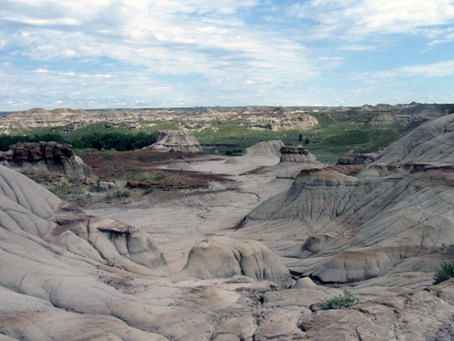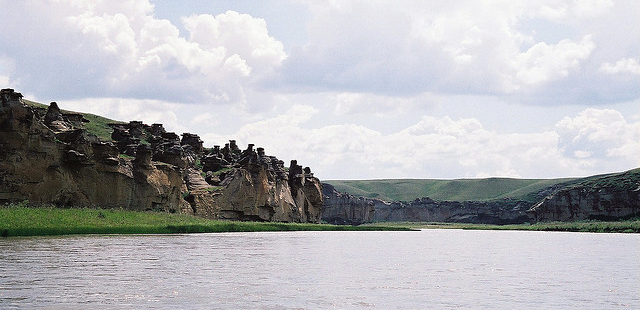Yes Mag: Canada’s Science Magazine for Kids, Winter 1998/1999—If a group of animals died together, there’s a good chance they lived together, says Philip Currie, dinosaur palaeontologist at the Royal Tyrrell Museum in Drumheller, Alberta.
Currie is studying a recently re-opened bonebed, located 60 kilometres up the Red Deer River from the museum. It contains the jumbled remains of Albertosaurus—a large, meat-eating dinosaur related to Tyrannosaurus rex.
Material from the site is changing scientists’ views on how the animals lived. Tyrannosaurs were though to be solitary creatures, but the Albertosaurus bonebed points to social behaviour. It appears that at some point in their lives the large carnivores were living in packs—possibly to hunt migrating herds of duckbilled and horned dinosaurs.
Although material from this site is giving scientists new ideas, this is not the first time the bonebed is being explored. In the 1910s, American palaeontologist Barnum Brown spent four summers collecting fossils from this area. Among the boxcar loads of bones he shipped to New York’s American Museum of Natural History were the remains of nine specimens from the Albertosaurus bonebed.
Brown’s field notes were sketchy, however. It wasn’t until Currie studied the New York specimens in 1996 that he realized the albertosaurs came from one quarry.
The following year, with only Brown’s notes and four archival photographs for direction, Currie searched for the site.
“We were trying to match landscapes with those in the photographs and were having no luck,” he says. “Another photograph was of the camp, taken from across the river. I sent someone over and they found the spot right away—it was that obvious. Now, it makes sense the quarry would close to the camp….”
After many more hours of searching, Currie found the quarry. “All that was left was a sinkhole, but there was lots of material. Pieces of skulls, toe bones, and bits of rib. It turns out Brown had excavated less than 25 percent of the site.”
Currie’s 1998 survey of the bonebed turned up pieces of a tenth individual dinosaur. What scientists find especially exciting is the diversity in the specimens’ ages.
“We found young guys. We found old guys. We found sub-adults,” says Stewart Wright, a palaeontology technician who works with Currie.
Scientists are still not sure why these dinosaurs died together. Charcoal in the rocks near the bonebed suggests a forest fire, but the evidence is inconclusive. Currie and his crew will return to the site next summer to look for answers.






